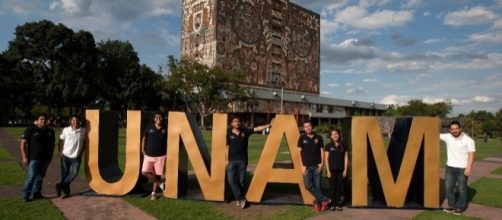Fungifree AB®: The first Biofungicide
The first Biofungicide made at UNAM was created from an asylum foliage of mango foliage, which can be used to replace chemical synthesis products in agriculture, without toxicity problems. Scientists from the National Autonomous University of Mexico (UNAM) developed and patented Fungifree AB®, which allows the control of Anthracnose (disease in plants) in mango orchards and other crops.
UNAM: How Biofungicide was created?
Researcher Leobardo Serrano Carreon explained that the Biofungicide was created from a bacterium isolated from mango foliage, which can be used to replace the chemical synthesis products used in agriculture without toxicity problems.
The patent protects the technology of production and use of a formulation based on a bacterium Bacillus subtilis, a phytopathogenic fungal antagonist microorganism. This means that it causes diseases in some plants of commercial importance and this bacterium, which is the active principle of this biofungicide, can support and stimulate the rapid growth of the plant.
Biofungicide: Named as Fungifree AB®
Fungifree AB® has a whole series of mechanisms that allow it to attack pests in the main and also stimulates the defense and growth of the plant. In addition to having efficient results in mango plants, the register covers 20 different crops, so it has been verified that it is able to antagonise this type of disease in mango, avocado and papaya; Is also able to avoid diseases in citrus.
Biofungicida "Fungifree AB", ganador del REMEI 2015https://t.co/wd0aTYGZG5 pic.twitter.com/QaEiK7s6Yh
— Biotecnología, UNAM (@ibt_unam) March 18, 2016
Serrano Carreon said that it is seeking to expand the use of rust control in coffee, so that the possibilities are being evaluated and hope that in the very near future this may be one of the applications of the Biofungicide. The areas where Fungifree AB® is most consumed are Chiapas and the Pacific coast, because there is more affectation for this type of disease, due to the tropical climate that is lived.
UNAM: Another project is on the go
In parallel to this project, the scientist explained that they are already developing a technique of image analysis, with the objective of evaluating the damage caused by Anthracnose in mango crops; This advance technique allows to keep a quantifiable record of the surface of the fruit that is affected by this disease.
The biofungicide "Fungifree ABMR", created by researchers Enrique Galindo Fentanes and Leobardo Serrano Carreon at the Institute of Biotechnology (IBt) of UNAM, to avoid Anthracnose in mangoes, was recognised by the Inter-American Institute for Cooperation on Agriculture IICA) as one of the three main biotechnological achievements in Latin America developed in 2012.

